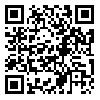Volume 28 - Supplementary
IBJ 2024, 28 - Supplementary: 178-178 |
Back to browse issues page
Download citation:
BibTeX | RIS | EndNote | Medlars | ProCite | Reference Manager | RefWorks
Send citation to:



BibTeX | RIS | EndNote | Medlars | ProCite | Reference Manager | RefWorks
Send citation to:
Ghorbani R, Seifi Motehwer S. Hypoglycemic Effects of Eryngium Billardieri Root Extract on Induced Type 2 Diabetic Rats. IBJ 2024; 28 :178-178
URL: http://ibj.pasteur.ac.ir/article-1-4601-en.html
URL: http://ibj.pasteur.ac.ir/article-1-4601-en.html
Abstract:
Introduction: Diabetes mellitus is the most common chronic disorder worldwide. Diabetes occurs when the body either fails to produce insulin or cannot effectively utilize it, leading to insulin resistance. As a result, excessive sugar (glucose) accumulates in the bloodstream, which can lead to various complications, including heart disease, vision impairment, and kidney dysfunction. The increased production of reactive oxygen species and oxidative stress contributes to the destruction of insulin-secreting beta cells in the Islets of Langerhans, further exacerbating the progression of diabetes. There are various medications available for diabetes, including insulin sensitizers (e.g., biguanides) and stimulators of insulin secretion (e.g., sulfonylureas). However, these drugs can lead to several complications, such as lactic acidosis, gastrointestinal disturbance, and hypersensitivity reactions. Traditional hypoglycemic herbs have received interest due to their low cost, effective combinations, low side effects, and recommendations from the WHO. This study investigates the effects of Eryngium billardieri on diabetes management. This plant was chosen because it has been traditionally recommended for treating diabetes. This study aimed to evaluate the antidiabetic and hypoglycemic effect of the E. billardieri root extract (EBRE) in diabetic rats.
Method and Materials: Wister male rats (n = 36) were randomly distributed into six groups. The study groups included the control (group 1), diabetics with no treatment (group 2) who received normal saline orally, diabetic rats with oral administration of glibenclamide (GLI; group 3), and diabetic rats fed with EBRE at 100, 200, and 400 mg/kg daily ( groups 4-6). Experiments were carried out over four weeks. For inducing people with diabetes, the rats received injections of streptozotocin and nicotinamide.
Results: Daily administration to diabetic rats at 100 mg/kg doses of EBRE for four weeks significantly reduced blood glucose and enhanced insulin concentration. In group 3, treatment with GLI resulted in a significant reduction in blood glucose levels and a remarkable increase in insulin levels compared to the diabetic group. Additionally, 28-day treatments of diabetic animals with GLI at a dosage of 100 mg/kg significantly increased HOMA-β compared to the diabetic rats.
Conclusion and Discussion: This study indicates the hypoglycemic effect of EBRE, which can help treat type 2 diabetes mellitus. The most effective dose was found to be 100 mg/kg.

Method and Materials: Wister male rats (n = 36) were randomly distributed into six groups. The study groups included the control (group 1), diabetics with no treatment (group 2) who received normal saline orally, diabetic rats with oral administration of glibenclamide (GLI; group 3), and diabetic rats fed with EBRE at 100, 200, and 400 mg/kg daily ( groups 4-6). Experiments were carried out over four weeks. For inducing people with diabetes, the rats received injections of streptozotocin and nicotinamide.
Results: Daily administration to diabetic rats at 100 mg/kg doses of EBRE for four weeks significantly reduced blood glucose and enhanced insulin concentration. In group 3, treatment with GLI resulted in a significant reduction in blood glucose levels and a remarkable increase in insulin levels compared to the diabetic group. Additionally, 28-day treatments of diabetic animals with GLI at a dosage of 100 mg/kg significantly increased HOMA-β compared to the diabetic rats.
Conclusion and Discussion: This study indicates the hypoglycemic effect of EBRE, which can help treat type 2 diabetes mellitus. The most effective dose was found to be 100 mg/kg.

| Rights and permissions | |
 |
This work is licensed under a Creative Commons Attribution-NonCommercial 4.0 International License. |







.png)
